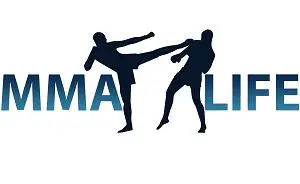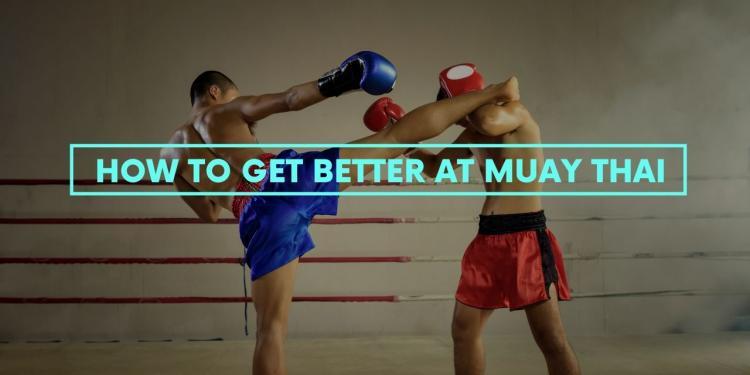Muay Thai is famously known as the art of the eight limbs. This recognition comes from the fact that it is a combat sport where its fighters attack each other with punches, elbows, kicks and knees. Avid fans of MMA and kickboxing could also see fighters, in these respective sports, adopt Muay Thai techniques to their advantage in competition. This article provides specific training exercises to make you better at Muay Thai. We try to break down the different elements of Muay Thai and what you can do to improve those specific elements. Because dissecting something is the best way accelerate your learning curve.
Kicks
Shin Conditioning - To toughen and condition both shins for impacts, practice kicking Thai heavy bags. Kick the bag with different parts of each shin.
Teep Drill - Teeps or push kicks are great for disrupting the opponent's rhythm and prevent them from getting their combinations off. Have a teammate holding a kick shield continuously advance in your direction. Work on knowing when and at what range is best to use your teeps.
Checking and Returning Kicks - Have a training partner holding Muay Thai pads throw low kicks at you. Practice checking their low kicks and immediately firing back a kick of your own.
Punches and Elbows
Punch Shield - Muay Thai fighters want to deliver every strike with maximum power. A punch shield is great for practicing singular power punches like hooks and uppercuts.
Long Guard Elbows - Practice throwing elbows from the long guard position. To set up for the elbow, parry the teammate’s jab with your rear hand while impeding their forward movement with your lead arm. This action creates an opening for a step-in elbow. More information about the long guard is mentioned in the “Defense” section of this article.
Diversity in Elbow Strikes - Learn to throw elbows at different angles. You should have a teammate be on the defensive as you practice throwing elbows that splits their guard or comes over the top of it. String together these elbow strikes into combinations as well.
Power vs. Cutting Elbows - To maximize each elbow’s damage, step into the elbow strike, torque your body and drive your weight behind it. For employing an elbow strike that cuts the opponent, utilize a shallow elbow movement that skims it across the surface of your target. Practice these two types of elbow attacks on a heavy bag.
Defense
Implementing the Long Guard - The long guard consists of having your lead hand extended and stiff arming your opponent as they come towards you while the rear hand parries and blocks incoming shots. The lead hand should be making contact with the opponent’s head, shoulders or chest to effectively impede their movement. Based on what strike the opponent is throwing, your rear hand will change accordingly. Practice defending yourself with the long guard as your teammate bombards you with an assortment of light strikes.
Checking Kicks - Move around the ring with your training partner and have them deliver low kicks randomly on both sides of your body. This drill will improve your kick checking reflex.
Defending and Countering Against Teeps - Have your teammate consistently perform push kicks during your training session. Every time they execute the push kick, employ different ways to defend and counter them. For example:
Catch the kick and follow up with a foot sweep.
Deflect the kick inside to expose their back and follow up with strikes.
Clinch
Pummeling Drills - Pummeling drills will enhance your ability to hand fight for dominant clinching positions. Practice transitioning between various positions like the collar tie and bicep control, plum grip, double underhooks, etc.
Strikes from the Clinch - Engage in clinching exchanges and carry out strikes from different clinching positions.
Continuous Knees to the Body - Apply a Muay Thai plum grip for head control as you drive powerful knee strikes towards the pads positioned by your teammate’s stomach.
Escaping the Plum - A common clinching mistake occurs when an individual try to get out of the plum grip by retreating backwards. This reaction actually makes it easier to break their posture. To escape the plum grip, practice framing with both hands so that they overlap each other and have your lead palm make contact against the training partner’s jaw. This movement should turn their head away and create enough space for you to regain your posture.
Sweeps and Takedowns - In Muay Thai competitions, you are allowed to take the opponent down from the clinch position. However, takedown attempts that lift them off the ground is prohibited. Integrate takedown sparring sessions from the clinch position into your training. Use the proper Muay Thai clinch stance to sweep and attack the opponent’s lower body while your upper body twists and off-balances them.
Sparring Strategies
Light Sparring Sessions - Since Muay Thai fighters in Thailand compete frequently and take plenty of punishment in the ring, they hold light sparring sessions at their home gym to keep their body fresh. This idea could be implemented into other martial arts where it is shown that you do not need to have all out wars to get better and improve. Find reliable training partners to have sparring sessions where you can focus on being precise in your movements and experiment with different techniques.
Picking Shots - Be methodical on how you approach the opponent. Try feeling out how they react to your movements. Patiently pick shots at gaps within their defense.
Hand Trapping - Due to Muay Thai fighters heavy reliance on using their arms to guard against strikes to the head, you must learn how to utilize hand trapping techniques to create openings. For example, manipulate their guard with your lead hand by pinning the targeted arm to their chest.
Hooking the Opponent’s Lead Leg - As the opponent steps forward, hook the back of their knee or lower leg and pull it in the direction of their movement to off-balance them.
Attacking the Rear Leg - When the opponent attempts to check your kick preemptively, quickly divert your kicking motion to target the rear leg. This will fluster the opponent and damage the leg they consistently use to maintain their weight and balance.
Timing Elbows - Being able to incorporate elbows into your striking combinations is a fantastic skill to have for each Muay Thai practitioner. In addition to that, it is also important to know how to time your elbow strike as your opponent launches towards you. This ability is great to use against aggressive opponents.
Timing Low Kicks - As soon as the opponent performs a jab, throw a low kick at their lead leg. Due to the opponent’s commitment to the punch, they are putting weight onto their front leg, which makes it difficult for them to pick it up in time to block your incoming kick. The low kick should also be used as the opponent is retreating, since their lead leg will be trailing and available for the picking.





